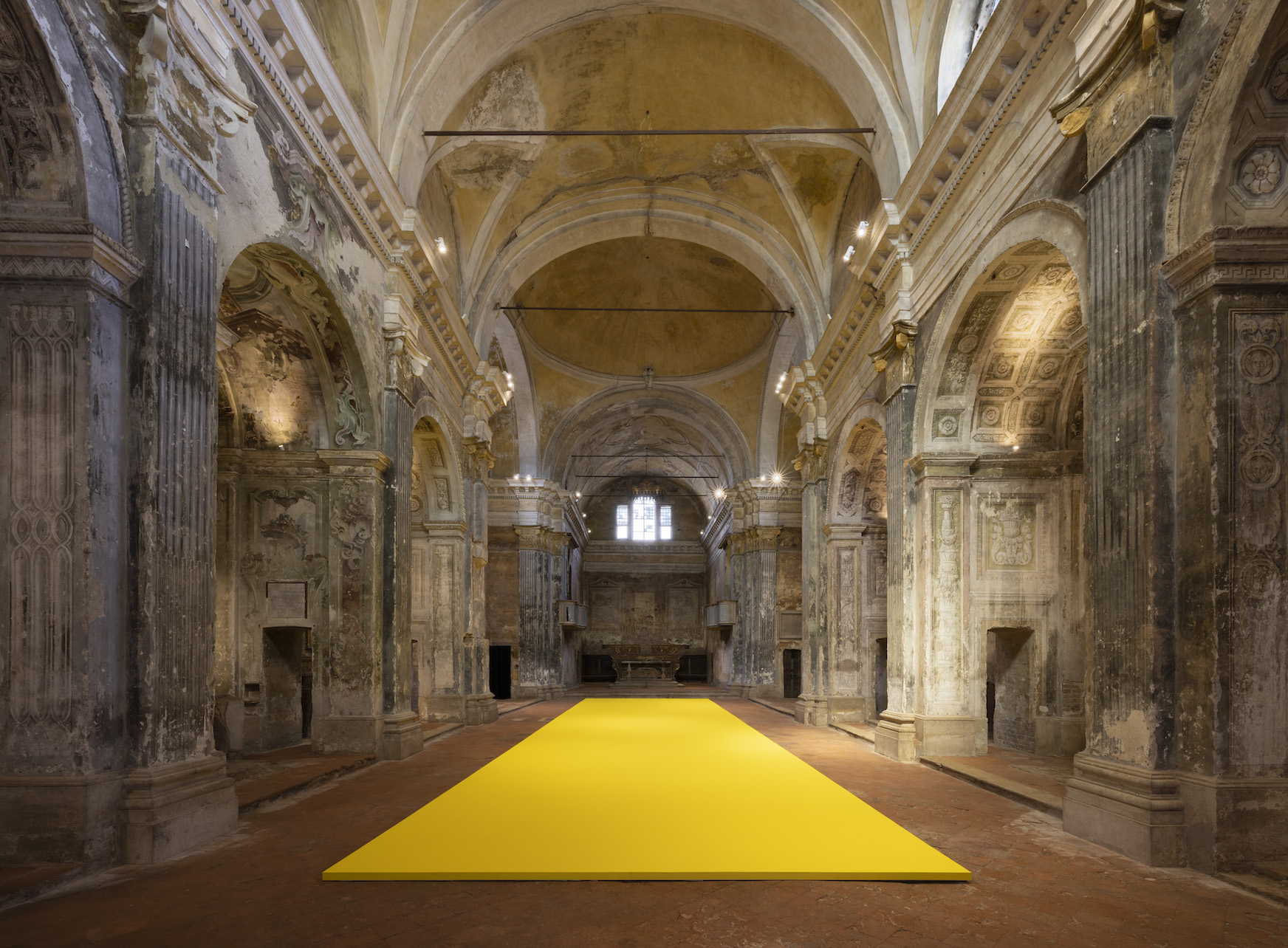Olivier Mosset (b. 1944, Bern, Switzerland) lives in Tucson, Arizona, US. He has been one of the most radical representatives of a contemporary manner of painting that undermines the ideal of artistic originality using objectivity and seriality. Taking the question of what painting is and how it works as a starting point, he has produced a multifaceted oeuvre of monochromes and abstract geometric works that reject any mystifying attribution of meaning. Mosset’s practice concentrates on monochromes that were often produced in series and demonstrate a very surface-oriented manner of painting, in which the traces of the application of paint are reduced to a minimum. Mosset had adopted this practice since the mid-1960s when he created paintings with letters, numbers and dots. Over the past fifty years, Olivier Mosset has developed an oeuvre with unmatched radicality and contemporariness. Always open to artistic collaborations, he is to this day still intent on creating a manner of painting that asserts its neutrality and autonomy without any superimposed anecdotal element.
The artist began his career as an artist in 1962, working as an assistant for Jean Tinguely and Daniel Spoerri. There, he also met Daniel Buren, Michel Parmentier and Niele Toroni. To fundamentally question painting in its predominant form and start from scratch, these four artists organised four provocative collective acts from January to September 1967, in which they broke away from abstract expressionism and Nouvelle École de Paris. This group, named BMPT after the artists’ initials, already disbanded in 1967. Around 1966, Mosset produced the first of around two hundred identical paintings with a circle motif, which he would work on until 1974: to undermine the principle of authorship and of creating a manner of painting that refers to nothing other than itself, this Swiss artist persistently painted black rings on white primed canvases measuring 100 x 100 cm. However, as these untitled rings became a kind of signature, he turned to two-tone vertical stripe paintings around 1973. Later, Mosset broadened his colour palette until he started to combine two similar colour nuances in 1976. This gradual convergence of the stripes’ colours led him to monochromy in 1977. At that time, he moved to New York, where he met key representatives of so-called radical painting and exhibited with them collectively. Until the mid-1980s, he addressed monochromy intensively, experimenting with various colours and formats while consistently intent on applying paint without any individual style. In 1985, Mosset returned to geometric abstraction, producing two-tone and three-tone abstract geometric paintings until 1990. He also started to give them titles, which rarely provided clear information about the work but instead encouraged contemplation of possible references to other artworks and ideas.
Portrait: Olivier Mosset, 2021. Courtesy of Simon Photographic, Tucson.
news





